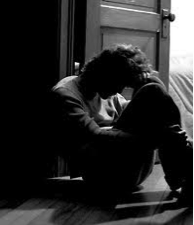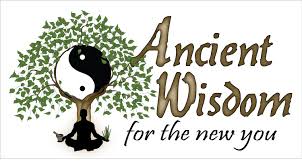
Lucid Dreams
 Lucid Dream is when one is aware of the dream he or she are having recognizing that it is not real, it usually occurs when one is in a middle of a dream and suddenly realizes they are only dreaming, when this happens the dreamer may have the ability to control his or her dream.
Lucid Dream is when one is aware of the dream he or she are having recognizing that it is not real, it usually occurs when one is in a middle of a dream and suddenly realizes they are only dreaming, when this happens the dreamer may have the ability to control his or her dream.
There are other phenomena associated with lucid dreaming such as Rapid eye movement (REM), false awakening which is when the dreamer falsely awakens in an environment similar to that of his dream and If the dreamer is lucid he or she would probably confuse between reality and dream and believe he or she are not in a dream and resume their reality routine, this confusion may continue till the dreamer realizes he or she are still in a dream or incase the dreamers actually wakes up…
Subscribe to our youtube channel to stay tune to our videos.
Sleep paralysis, where the body protection mechanism paralyzes to prevent sudden movements causing any physical injury to the body.
Then there is what is known as Out of Body Experience an OBE and Astral Projection which will be referred to in coming articles.
Lucid dream may very well begin as an ordinary dream and develop to become 1-A dream-initiated lucid dream (D.I.L.D.) in which the dreamer recognizes he is in a dream and 2- A wake-initiated lucid dream (W.I.L.D.) A dreamer consciously moving from a normal waking state into a dream state, whereas a wake-initiated lucid dream occurs when the sleeper enters REM sleep with uninterrupted self-awareness from the waking state.
Science began to observe this phenomenon as early as 1800s whereas ancient history mentions that Aristotle (born334 died 322 BC) referred to it at a much younger phase of observation in our human history by suggesting that there is a part of consciousness which alarms the dreamer that he is in a dream. However, early Hindus and Buddhists also recorded lucid dreams and developed a spiritual meditational method to initiate it, this technique is known as Nidra technique, Yoga Nidra is a state of mind between wakefulness and sleep opening deep phases of the mind, suggesting a connection with the ancient tantric practice called Nyasa, whereby Sanskrit mantras are mentally placed within specific body parts, while meditating on each part (of the body/mind concept).
Scientifically it is believed that the active experience of a lucid dreamer is due to an increase of beta brain wave frequency (13 to 19 HZ) in the parietal lobes causing the lucid dreamer to be conscious of his dream making it very realistic.
Marquis D’Hervey De Saint Denys’s categorized lucid dreaming as a distinct experience separating it from ordinary dream relating it to rapid eye movement (REM sleep) during sleep and linked to the false awakening phenomenon.
As research advanced at a later stages of study researchers applied a specific scale to help them monitor and identify a lucid dream from an ordinary dream:
- Awareness of the dream state (orientation), Neuroscientist J. Allan Hobson explains; this recognition might occur in the dorsolateral prefrontal cortex which is related to active memory that deactivates during REM sleep. Once this area is activated and the recognition of dreaming occurs, the dreamer needs to let the dream continue while consciously realizing the dream nature of the events he is experiencing…
2. Awareness of the capacity to make decisions
3. Awareness of memory functions
4. Awareness of identity
5. Awareness of the dream environment
6. Awareness of the meaning of the dream
7. Awareness of concentration and focus (the subjective clarity of that state).
Neuroscientist Hobson’s hypothesizes was that what makes a dream lucid is the recognition of the dreamer that he is dreaming.
Later on a new therapy was developed and became known as lucid dreaming therapy treatment which was successful in reducing nightmare frequency. The treatment consisted of exposure to the idea, mastery of the technique, and lucidity exercises which consisted of;
– Awareness and reasoning while dream control and dream awareness are correlated, neither requires the other.
-The dreamer is aware he is dreaming
-Objects vanishes after waking
Physical laws need not apply in the dream
-The dreamer retains clear memory of the real world
Yogi Satayananda included the following stages of his lucid dream exercise which is:
1-Internalisation
2-Sankalpa
3-Rotation of Consciousness
4-Breath Awareness
5-Manifestation of Opposites
6-Creative Visualization
7-Externalisaton
In Buddhism it was practiced among the monastic circle accordingly with the ancient Sarvastivada schools Sutra concept of Mindfulness of the Body in the Madhayama agama stating that monks and nuns while practicing should be aware of the four postures and states of being asleep or awake.
Australian Aborigines also practiced the lucid dreaming phenomena as part of their traditional rituals referring to it as dream time.
You can train to lucid dream following simple routines such as checking if and when you are dreaming by repeatedly asking yourself whether you are dreaming or awake, and you may keep a notebook beside your pillow to record your dreaming experience on nightly basis, I personally used to draw some of the elements of my dreams and found it helps a lot, remembering your dreams is the first condition of becoming a lucid dreamer, also, remember that we usually have between three to four dreams every night and it is essential to try to remember at least one or two of your dreams by training yourself to wake up and record the dream then go back to bed after you are finished recording it immediately, this is the best technique to recall your dream.
Try to establish your own dream schedule and make it a nightly routine ritual so that you may be able to induce or initiate a lucid dream.
Have a good sleep, and train yourself to nap when you want to lucid dream, studies shows lucid dreams may happen more often while napping.
If you wish to speed up or initiate a lucid dream you may apply the REM sleep technique using the rapid eye movement starting rather fast for a minute till you start viewing flashes behind your eye lid then slow it down and merge it with the breathing technique (Breathing Pattern and Sleeping Pattern) which you will also find on our website, relax and sleep in one position avoiding to change you position till you fall into sleep helps, if you find difficulty to sleep try talking to yourself in a calm sedating tone, you can mention the events and activities you were involved in during your day, or you may describe in details what you wish to lucid dream of. I personally do this when I want to lucid dream.
Train yourself to wake up occasionally every few hours after you fall asleep to record whatever you can remember from what you previously dreamt of, but the best way is to wake up immediately from a dream to record it.
Listening to Theta binaural beats for 15 to 30 minutes may help initiating a REM sleep.
You can purchase Transparent mind related products from the link you find left side on our front page
When you wake up to record your dreams try to avoid thinking of any external or irrelevant thought or idea unless you wish to interrupt you dreaming pattern.
In future articles we will discuss the out of body experience and how it differs from lucid dreaming.
Enjoy
Adam El Masri




